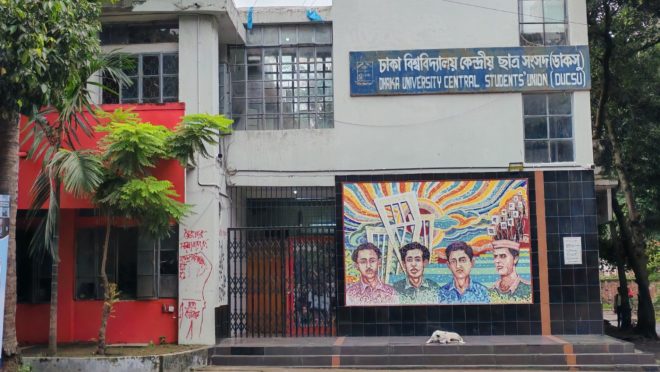20 panels, 20-page ballot, a full-panel win for JCD: Revisiting the 1990 Ducsu polls
20 panels, 20-page ballot, a full-panel win for JCD: Revisiting the 1990 Ducsu polls

The 1990 Dhaka University Central Students’ Union (Ducsu) election remains one of the most remarkable episodes in the history of campus politics—marked by record participation, unprecedented competition, and a landslide victory for the Jatiyatabadi Chhatra Dal (JCD), the student wing of the Bangladesh Nationalist Party.
Set against the backdrop of a nationwide anti-autocracy movement, the 1990 polls not only reflected students’ political activism but also contributed momentum to the mass agitation that toppled the regime of military ruler HM Ershad later that year.
Unprecedented competition: 20 panels, 1,530 candidates
In the central body alone, 489 candidates contested 20 positions, while 1,041 others vied for 168 seats across 14 hall unions. The number of panels doubled from the previous year, rising from 10 in 1989 to 20 in 1990. The VP and social service secretary posts saw the highest number of candidates, with 31 candidates each. Independent candidates also surged—nearly 100 entered the race, more than double the previous election.
20-page ballot and the first use of ballpoint pens
The sheer number of candidates necessitated the Election Commission printing a 20-page ballot paper for the central polls. According to a Sangbad report dated June 6, 1990, the election budget was set at Tk 4 lakh. That year also marked the first use of ballpoint pens (“shis kolom”) in Ducsu voting, replacing the wooden pencils that had been previously used.
Peaceful voting, 62% turnout
On polling day, 28,690 students were eligible to vote, and 17,138 did so—a turnout of 62.5%. Sangbad reported on 7 June: “The Ducsu election was completed peacefully.” Voting began simultaneously across all 14 halls at 7:30 a.m. and continued uninterrupted until 2 p.m., under heavy police security. Ballot boxes were then taken to the Arts Building for counting.
Further highlighting the smooth proceedings, Inqilab and Ittefaq also carried headlines the same day, emphasising the calm atmosphere.
Posters and promises
Campaign posters reflected the political mood of the time. Chhatra League’s (Ha-Awami) posters urged: “Unite against autocracy, terrorism, and communalism.” JCD promised to “eradicate autocracy and terrorism while preserving university autonomy.” Chhatra Union called: “Stand up against arms and terror, save endangered Dhaka University.” The nine-party alliance pledged “uncompromising leadership of a healthy student movement, sharpened by the spirit of the Liberation War, against communalism and terror.” National Chhatra League posters appealed to voters: “Restore the dignity of Dhaka University.”
JCD unites, sweeps the polls
Initially split between the Aman–Khoka panel and the Dudu–Ripon panel, JCD (Jatiyatabadi Chhatra Dal) eventually united following intervention from party leadership. The result was a clean sweep—JCD candidates won all 20 central posts, including VP Amanullah Aman, GS Khairul Kabir Khokon, and AGS Nazim Uddin Alam, each securing about 7,000 votes—double their nearest rivals.
JCD dominated the hall unions too, winning 131 of 168 seats, including full panels in nine halls.
Chhatra League finished second, winning 29 seats and two full panels. The Chhatra Union secured seven seats, and one went to an independent candidate. Candidates from the nine-party alliance and Islami Chhatra Shibir failed to win.


